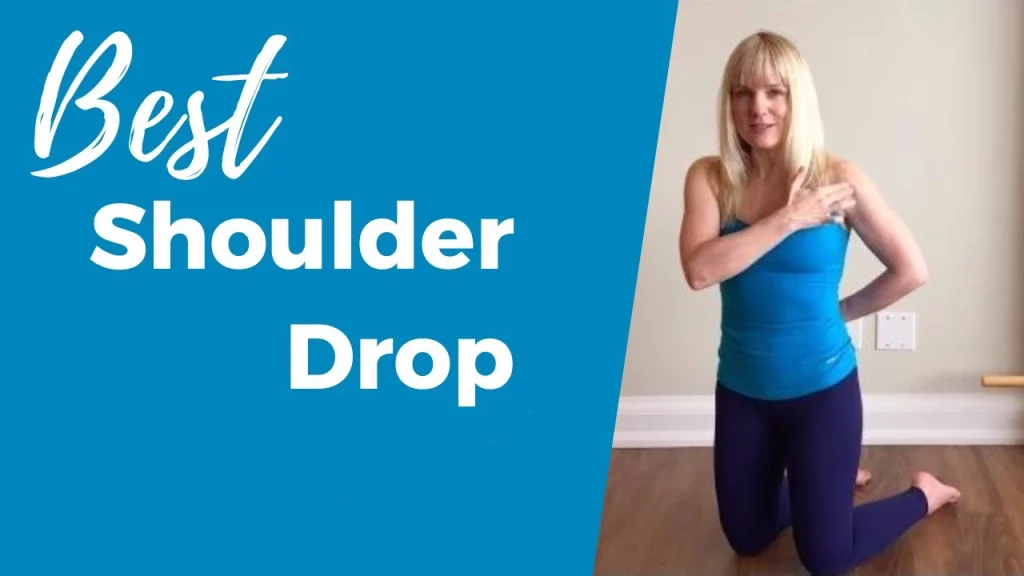
Most Suitable Exercise to Treat Shoulder Drop with Picture
If you may also have shoulder drop or winged scapula, fortunately, this problem can be fixed by doing exercise to treat shoulder drop. Doing activities such as driving, sitting, standing, looking at mobile phones, causes the shoulders to round and as a result, they drop. However, with proper training, the body can be accustomed to correcting this condition by pulling the shoulders back. To do this correctly, the shoulders should be pulled back in such a way that the person feels like he is holding a tennis ball with his shoulder blades.
Many of us may spend a long time in front of the computer, hunched over and with our shoulders facing forward and down. Unfortunately, poor posture like shoulder drop can easily become a habit that affects everything from neck pain and headaches to pressure in the lower back and blood circulation. With a little practice and regular stretching, you can put the brain and body back on the right nerve pathways. In this article from the Human Health Mag website,we introduce some useful exercises for improving shoulder droop.
What is shoulder sag and how to determine its cause
Shoulder sag, also known as hunched shoulder, is a condition in which the shoulders sag forward and downward. This condition can be caused by muscle weakness, muscle imbalance, poor posture, or injury. Of course, doing exercises to treat shoulder drop has a great impact on resolving this problem. The most important causes of sag are:
- Muscle weakness: Weak muscles in the shoulders, back, and chest can cause the shoulders to drop forward. This is especially common in people who sit at a desk a lot or have little physical activity.
- Muscle imbalance: If one side of your body is stronger than the other, your shoulders may sag toward the weaker side. This imbalance can be caused by injury, inherent muscle asymmetry, or poor movement habits.
- Poor posture: Hunching, sitting for long periods of time with a forward bend, or carrying a heavy bag can tighten the chest muscles and pull the shoulders forward. This is especially common in people who have to sit for long periods of time due to work or school.
- Injury: Shoulder injuries, such as torn muscles or ligaments, can cause shoulder drop. This is especially common in athletes and people who do heavy physical work.
- Certain diseases: Some diseases, such as osteoarthritis and myofascial pain syndrome, can also cause shoulder drop.
- Genetics: Some people are genetically predisposed to shoulder drop.
- Stress: Stress can lead to muscle tension and slouching.
- Obesity: Being overweight can put extra pressure on the shoulder and back muscles, causing shoulder drop.
The Effect of Exercise in Treating Shoulder Drop
Exercise to treat shoulder drop and corrective exercises play a very important role in eliminating this problem and can help improve posture and strengthen the muscles around the shoulder area. These types of exercises usually include strengthening, stretching, and posture improvement exercises that help a person restore muscle balance and prevent excess pressure on the shoulders. The positive effects of exercise and corrective exercises include:
- Muscle strengthening: Specific exercises such as weight training and stretching exercises can strengthen the muscles of the back, neck, and shoulders. This muscle strengthening helps maintain the correct position of the shoulders and prevent them from drooping.
- Increase flexibility: Stretching exercises such as yoga exercises for seniors can increase the flexibility of the shoulder and the muscles around it. This not only helps reduce pain and tension, but also improves range of motion.
- Improve posture: Corrective exercises help people have better posture. By learning how to sit, stand, and move correctly, you can reduce the pressure on the shoulder area.
- Reduce pain and discomfort: By strengthening muscles and improving flexibility, many problems associated with shoulder pain are reduced and the person can perform their daily activities with more comfort.
- Prevent recurrence: By regularly performing exercises and corrective movements, you can prevent the recurrence of shoulder sag problems and continue to lead an active and healthy lifestyle.
Introducing Exercise to Treat Shoulder Drop
Here are several exercises to treat shoulder drop. These exercises are designed to be easily done at home and do not require any special equipment.
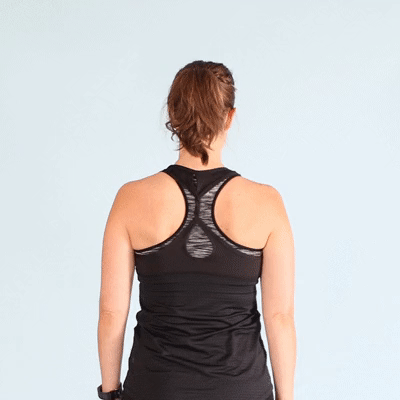
Shoulder Muscle Contraction
This simple but effective exercise to fix dropped shoulder helps strengthen the muscles of the upper back and shoulders. To do this exercise:
- Stand or sit straight and place your hands on either side of your body.
- Pull your shoulders back and down, as if you are trying to bring your shoulder blades together.
- Hold this position for 5 to 10 seconds and then release.
- Repeat this exercise 10 to 15 times.
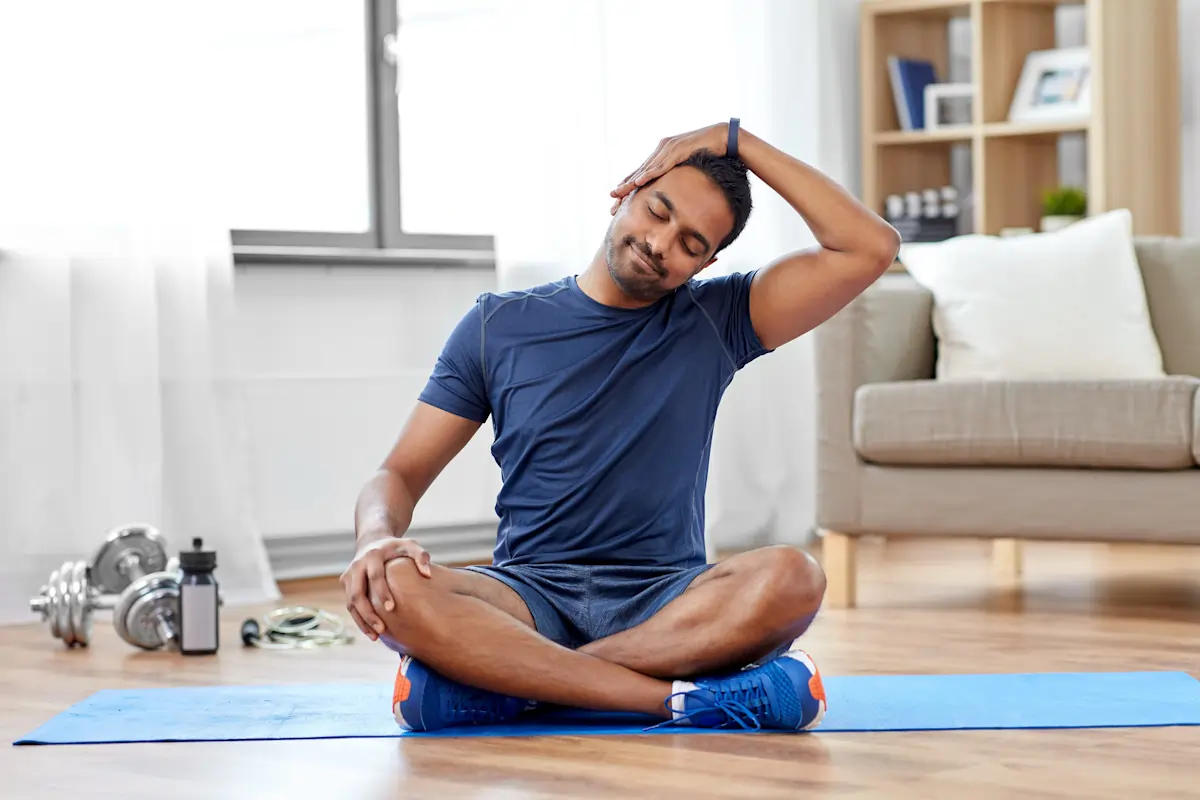
Ear-to-Shoulder Stretch Exercise
This exercise to fix dropped shoulder helps stretch the side muscles of the neck and shoulders. To do this exercise:
- Sit or stand straight.
- Slowly tilt your head to the right, so that your right ear is closer to your right shoulder.
- With your right hand, apply gentle pressure to your head to increase the stretch.
- Hold this position for 15 to 30 seconds, then repeat on the other side.
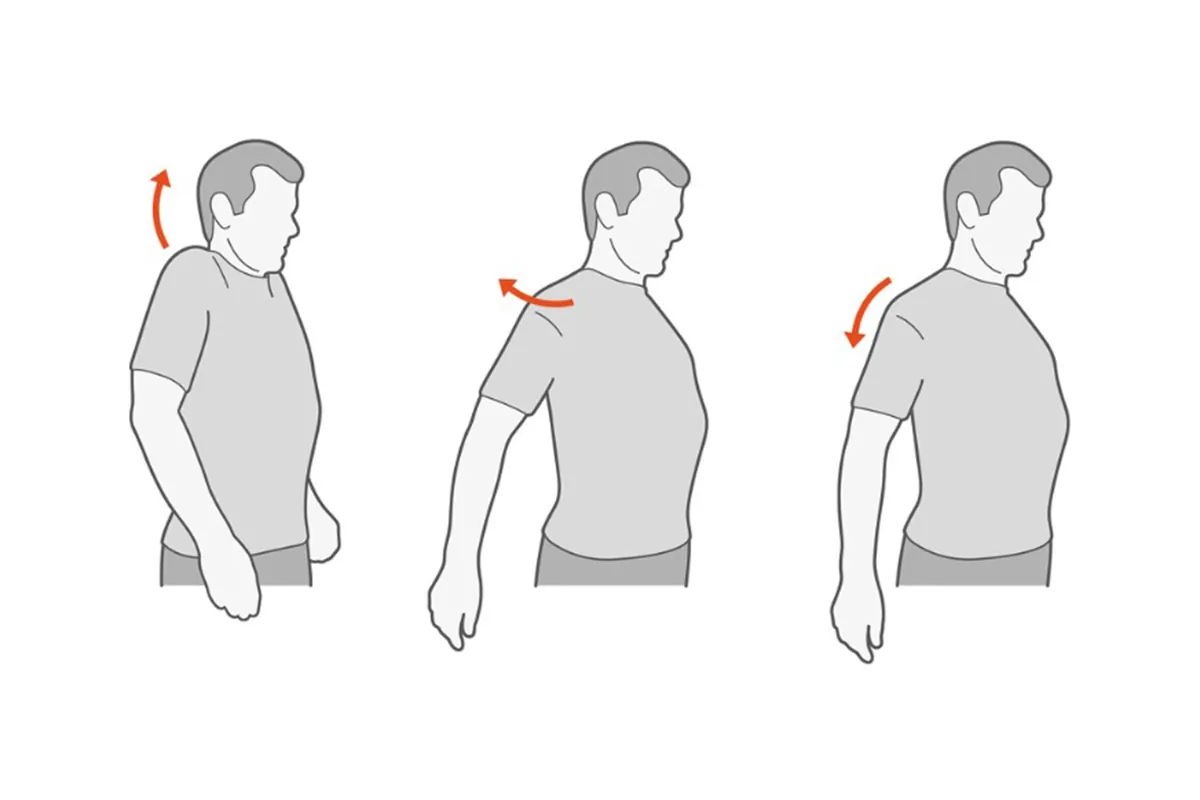
Shoulder Mobility Exercise
This exercise to fix dropped shoulder helps increase shoulder mobility and strengthen the muscles around it. To do this exercise:
- Stand up straight with your arms at your sides.
- Slowly roll your shoulders up, back, down, and forward.
- Do this exercise 10 times clockwise and 10 times counterclockwise.
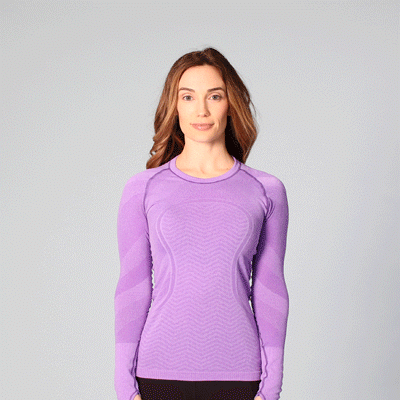
Shoulder Shrugs(Without Dumbbells)
This exercise to fix dropped shoulder helps strengthen the muscles in your upper back and shoulders. Although it is more effective for reducing shoulder sag with dumbbells due to the increased pressure and difficulty of this exercise, you can also do this exercise without dumbbells. To do this exercise:
- Stand up straight with your arms at your sides.
- Pull your shoulders up, as if you are trying to bring them closer to your ears.
- Hold this position for 2 to 3 seconds, then release your shoulders.
- Repeat this movement 10 to 15 times.

Stretching Hands Behind Back
This movement helps stretch your chest and shoulder muscles. To do this movement:
- Stand up straight and place your hands behind your body.
- Pull your elbows back, opening your chest.
- Hold this position for 15 to 30 seconds, then release.
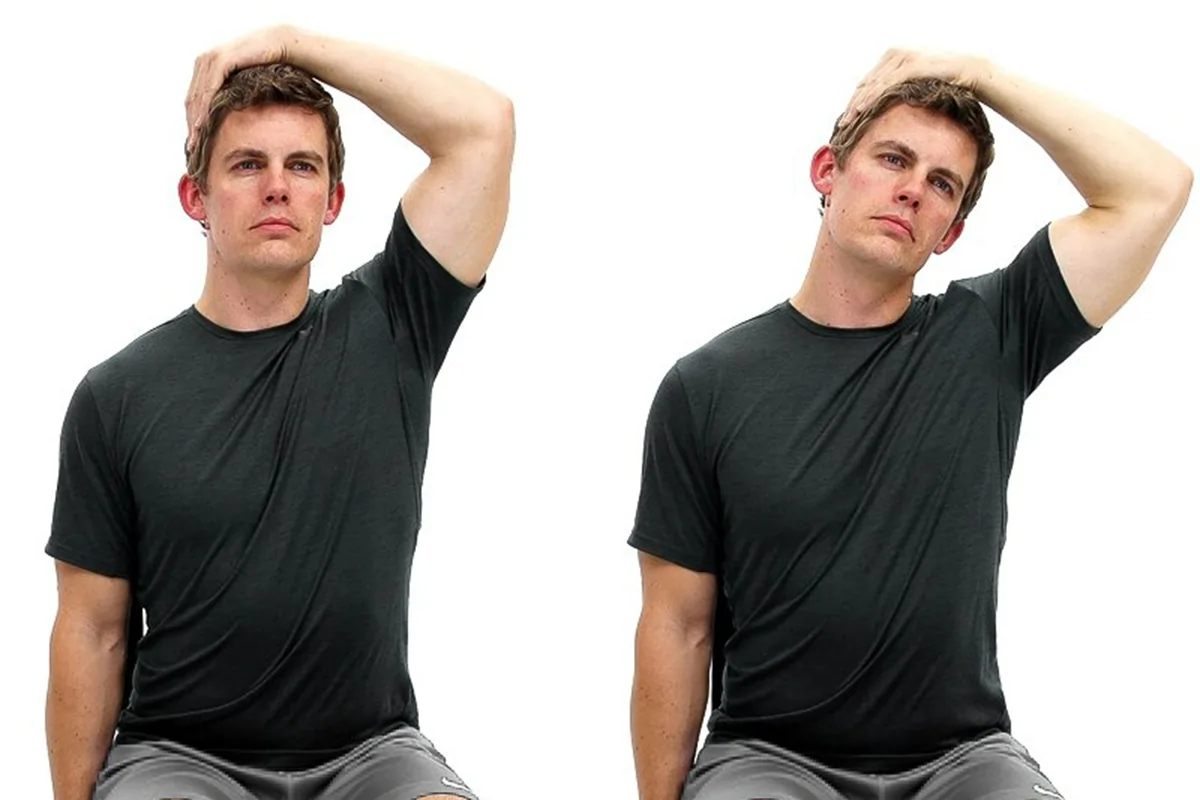
Upper Trap Stretch
This movement helps stretch your upper trapezius muscles to correct sagging shoulders. To do this movement:
- Sit or stand up straight.
- Place your right hand on your head and tilt your head to the right.
- Apply gentle pressure to your head with your right hand to increase the stretch.
- Hold this position for 15 to 30 seconds, then do the other side.
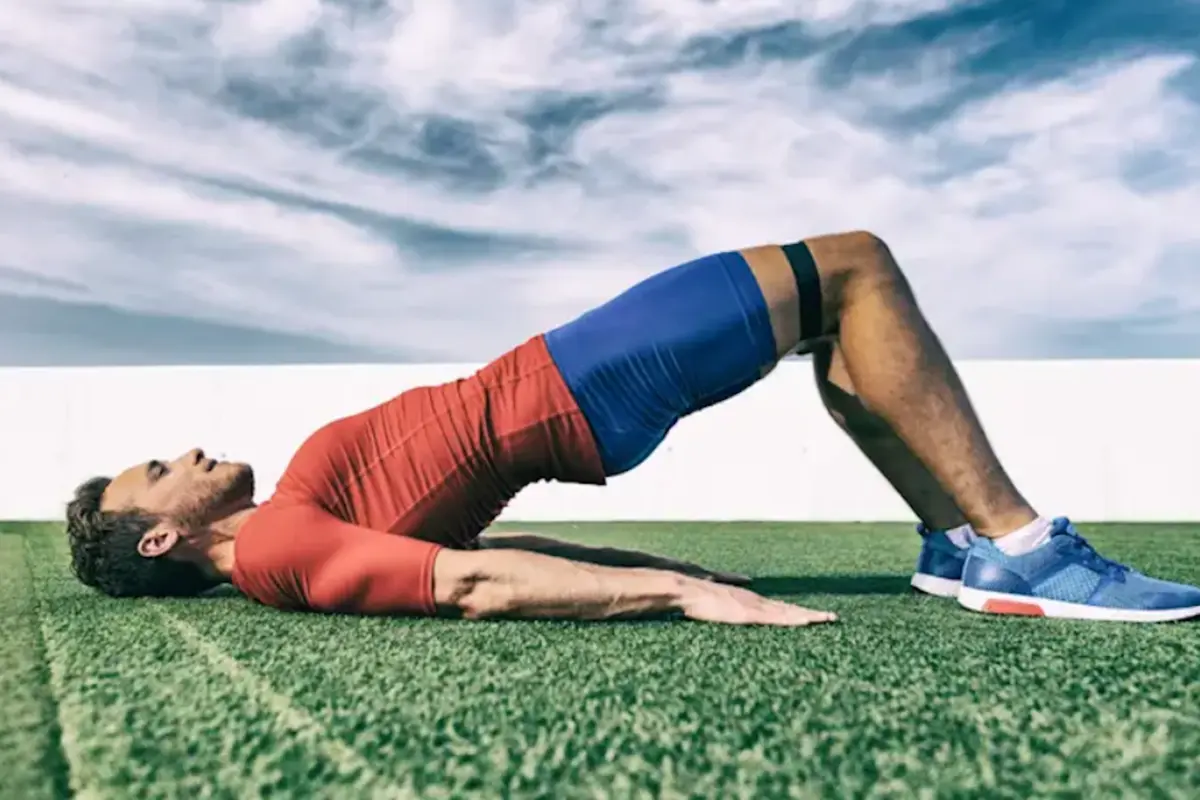
Bridge Exercise for Shoulder Droop
This exercise to fix dropped shoulder helps strengthen the muscles in your back and shoulders. To do this exercise:
- Lie on your back and bend your knees.
- Place your hands on your sides.
- Lift your hips up so that your body is in a straight line from your shoulders to your knees.
- Hold this position for 5 to 10 seconds, then release.
- Repeat this exercise 10 to 15 times.

Spinal T-Stretch
This exercise to fix dropped shoulder helps strengthen your core muscles and improve your posture. To do this exercise:
- Lie on your stomach with your arms out to the sides.
- Lift your head and chest off the floor and stretch your arms up.
- Hold this position for 5 to 10 seconds, then release.
- Repeat this exercise 10 to 15 times.
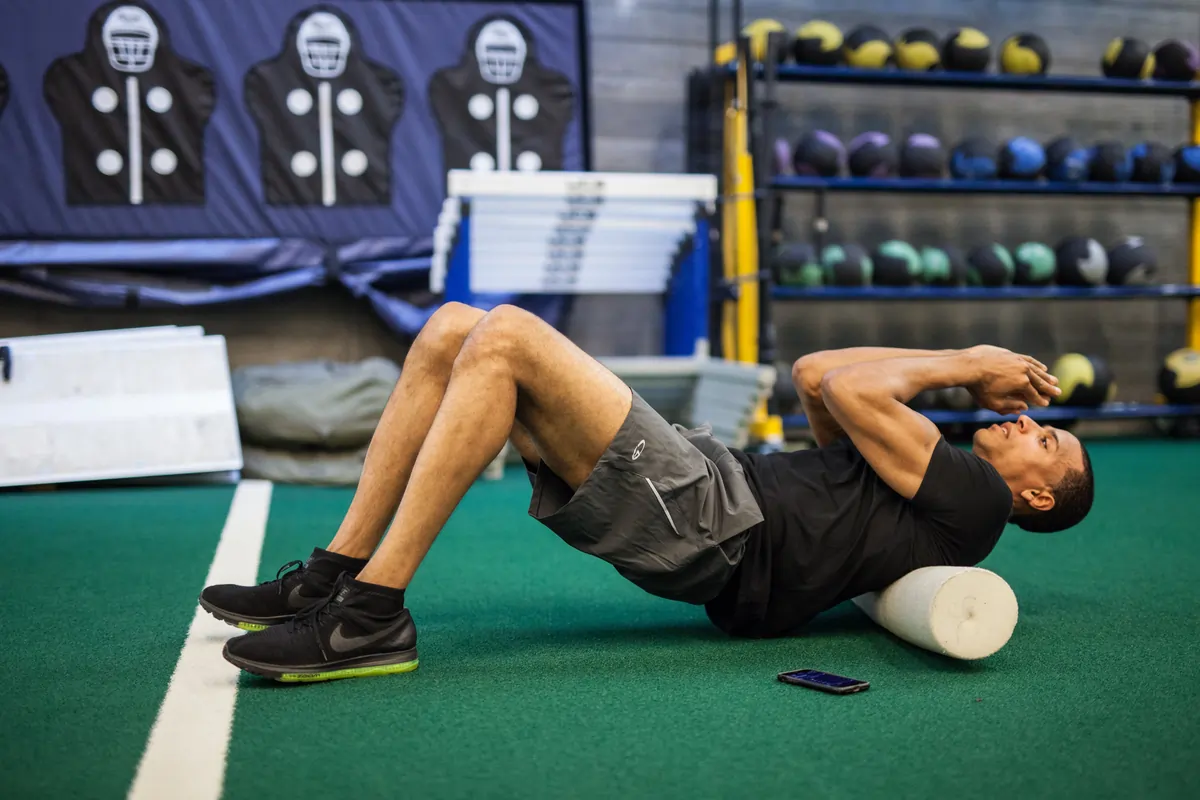
Foam Roller Exercise
This exercise to fix dropped shoulder helps release tension in the muscles of the shoulders and back. To do this exercise:
- Place a foam roller on the floor.
- Lie on your back on the foam roller and place it under your shoulders.
- Gently move your body back and forth so that the foam roller massages the muscles of the shoulders and back.
- Do this exercise for 1 to 2 minutes.
Duration of Exercise to Treat Shoulder Drop
The duration of exercise to treat shoulder drop depends on several factors. In general, most people may see significant changes in their shoulder position and feel after 4 to 6 weeks of regular exercise. However, for lasting results and overall improvement in physical condition, several months of exercise may be necessary. Other factors that affect the duration of treatment include:
Severity and type of shoulder drop
- If the drop is mild, you may see results faster. While more severe drops may require more time.
Continuity and regularity of exercise
- Doing regular exercises related to strengthening the muscles of the back and shoulders can have a great impact on improving your condition. It is recommended to exercise at least 3 to 4 times a week.
Type of exercise
- A combination of strengthening movements for the back muscles and stretching for the chest and shoulders can be effective in the recovery period.
Lifestyle and daily habits
- Sitting habits, computer use, and other activities can also affect the length of treatment. Modifying these habits can help you recover faster.
Concluding Remarks
Shoulder drop is a common problem that can negatively affect a person’s appearance and health. Fortunately, by doing exercises to treat shoulder drop and improving posture, this condition can be effectively treated. Regularly performing the exercises to fix dropped shoulder that we introduced in this article will not only help improve the condition of the shoulders, but also reduce pain and increase joint mobility. If you are also facing the problem of shoulder drop, start these exercises today and see your posture improve.
Of course, if your shoulder drop is severe or painful, it’s a good idea to consult a physical therapist. They can design appropriate exercises and a program specific to your needs. Remember that improving your posture is a gradual process that requires patience and perseverance. Ultimately, by doing the right exercises and following the appropriate recommendations, you can gradually improve your shoulder posture.
Could you help us make this content even better? What do you love, and what can we improve? Share your thoughts below, feedback is the key to creating better content for you.

Frequently Asked Questions
What Causes Shoulder Drop?
Shoulder sag is usually caused by a combination of factors. The main causes include sitting incorrectly for long periods of time, weak back and chest muscles, and muscle imbalances. Everyday activities such as working at a computer or using a cell phone can also cause this problem.
Is it Possible to Treat Shoulder Drop With Exercise?
Yes, in fact, exercise is one of the key treatments for this problem. Performing shoulder sag corrective exercises can help strengthen weak muscles, improve muscle balance, correct posture, and increase shoulder range of motion.
Are There Other Treatments for Shoulder Drop?
Your first line of defense for shoulder drop is stretching and strengthening your muscles. Along with these exercises, soft tissue mobilization by a physical therapist can help loosen tight, shortened muscles in the chest area that may be caused by hunched shoulders. Some people may also use a brace to improve their shoulder posture, which helps keep the neck and shoulders in the correct position.
What Exercises Should you Avoid if you Have Droopy Shoulders?
As long as you don’t experience pain or discomfort in this area, you don’t need to avoid certain exercises. Droopy or rounded shoulders are often caused by a muscular imbalance between the chest and the shoulder or upper back area. To correct this imbalance, stretching and strengthening should target the chest and upper back, not one or the other specifically. When performing exercises, make sure your spine is straight and you’re not hunching over.
